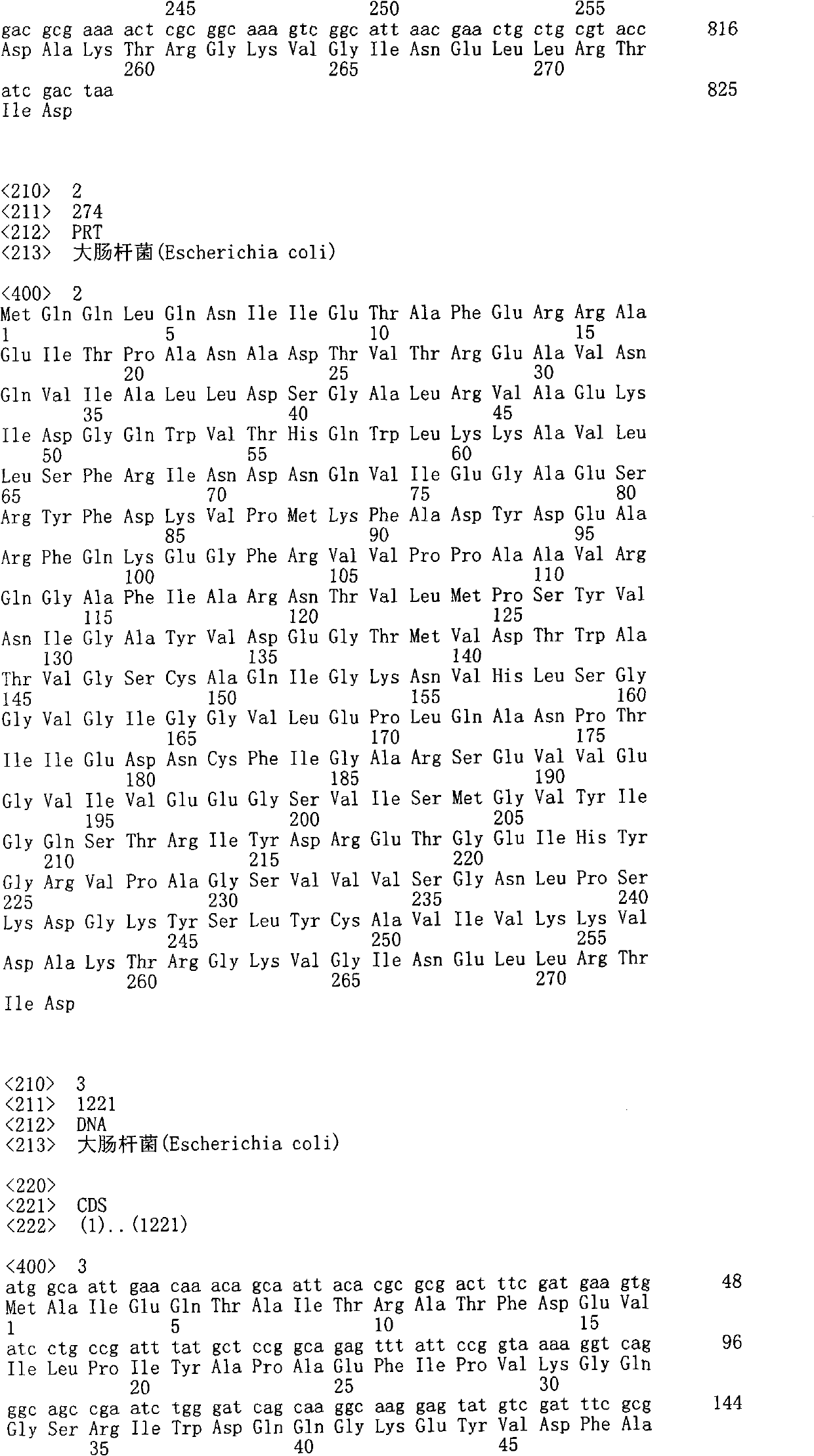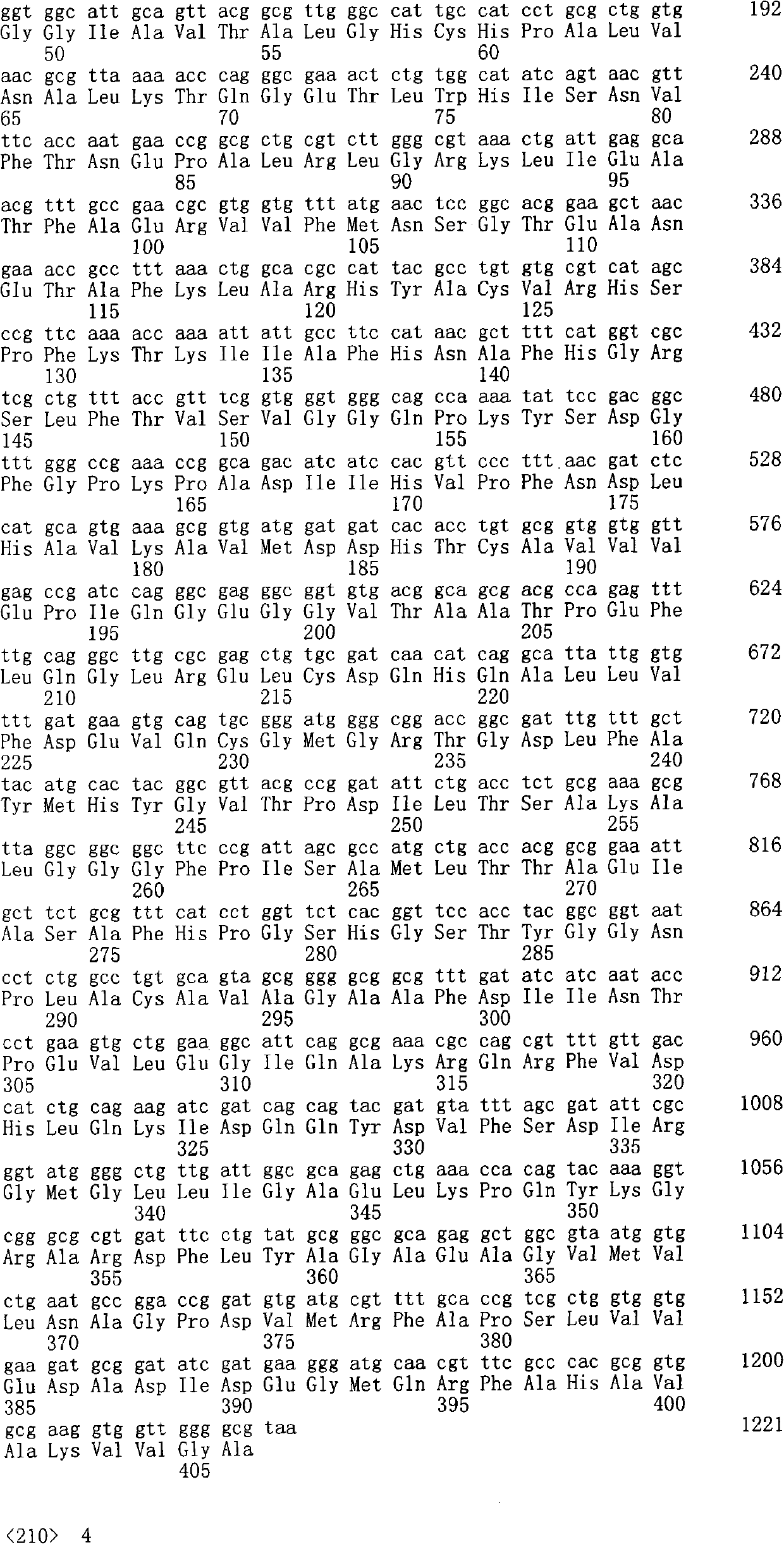Method for production of L-lysine
A technology of lysine and diaminopimelate dehydrogenase, which is applied in the direction of biochemical equipment and methods, enzymes, isomerases, etc., can solve the problem of reducing
- Summary
- Abstract
- Description
- Claims
- Application Information
AI Technical Summary
Problems solved by technology
Method used
Image
Examples
Embodiment 1
[0139] [Example 1] Construction of L-lysine-producing bacteria in which dapD is disrupted
[0140] Construction of dapD gene disrupted strain
[0141] First, the dapD-disrupted strain was constructed using the Escherichia coli wild-type strain MG1655.
[0142] Take pMW118(λattL-Km r -λattR) (refer to International Publication No. WO2006093322) plasmid as a template, using SEQ ID NO: 19 and 20, the sequences attL and attR corresponding to the sequence attL and attR at the 3' end of the primer 1. A synthetic oligonucleotide having a sequence corresponding to a part of the dapD gene as the target gene at the 5' end of the primer was used as a primer to carry out PCR, and the λ- MG1655ΔdapD::att-Km strain was constructed by red method. In the λ-red method, Km-resistant recombinants are obtained by plate culture on L-agar medium containing Km (kanamycin) (50mg / L) at 37°C and selecting Km-resistant recombinants. ongoing.
[0143] Transform L-lysine producing strain WC196LC / pC...
Embodiment 2
[0147] [Example 2] Evaluation of L-lysine production capacity of L-lysine-producing bacteria with dapD destroyed
[0148] Melt the glycerol preservation solution of the bacterial strain obtained in Example 1, take 100 μL and evenly spread it on an L plate containing 20 mg / L streptomycin, and incubate at 37° C. for 24 hours. About 1 / 8 of the bacterial cells on the obtained plate were suspended in 0.5 mL of physiological saline, and the turbidity at a wavelength of 600 nm was measured with a spectrophotometer U-2000 (Hitachi). Inoculate 20 mL of the fermentation medium (MS medium, composed as follows) containing 20 mg / L streptomycin in a 500 mL Sakaguchi flask with the resulting suspension containing the bacterium, wherein the amount of liquid inoculated is such that the turbidity at a wavelength of 600 nm was 0.15, and cultured for about 24 hours with a reciprocating shaking culture device at a stirring speed of 114 rpm and a temperature of 37°C. After the cultivation, the amo...
PUM
 Login to View More
Login to View More Abstract
Description
Claims
Application Information
 Login to View More
Login to View More - R&D
- Intellectual Property
- Life Sciences
- Materials
- Tech Scout
- Unparalleled Data Quality
- Higher Quality Content
- 60% Fewer Hallucinations
Browse by: Latest US Patents, China's latest patents, Technical Efficacy Thesaurus, Application Domain, Technology Topic, Popular Technical Reports.
© 2025 PatSnap. All rights reserved.Legal|Privacy policy|Modern Slavery Act Transparency Statement|Sitemap|About US| Contact US: help@patsnap.com



